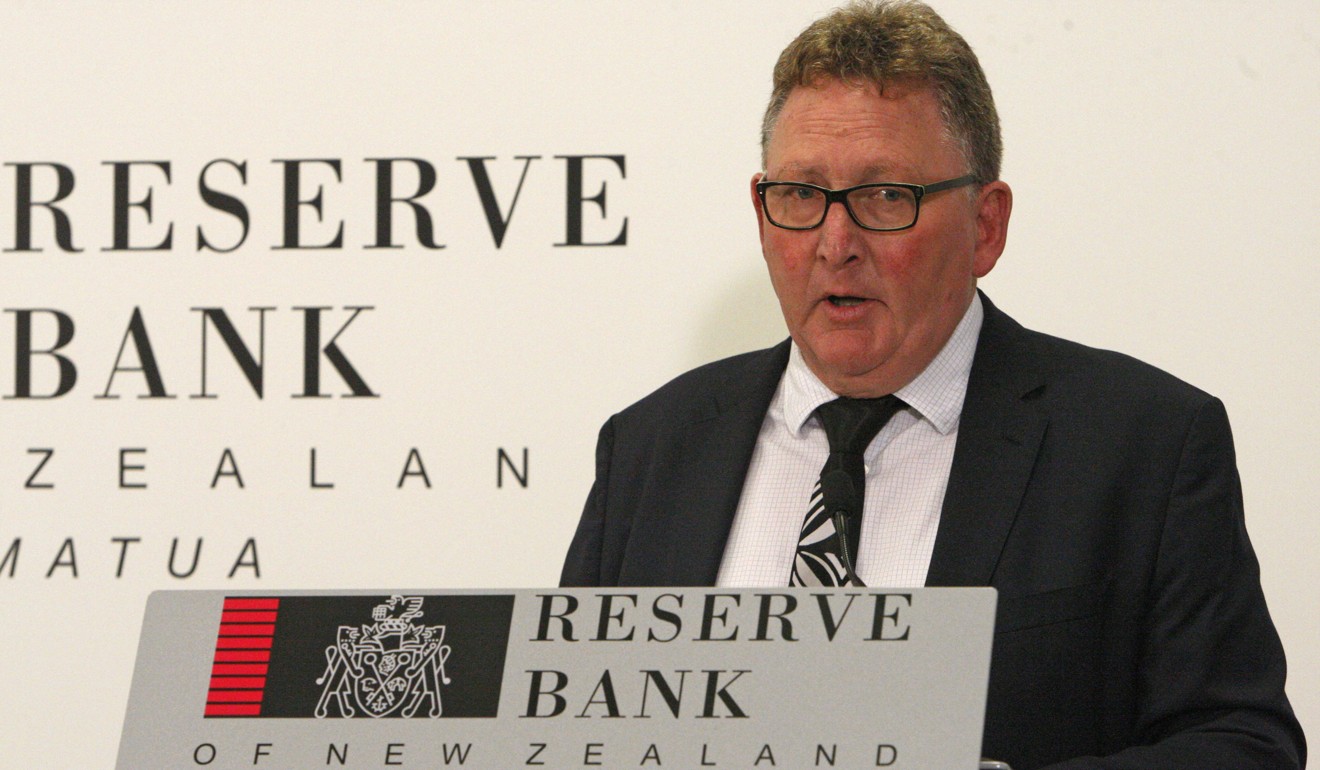
India, Thailand and New Zealand have cut interest rates. What does this mean for the Asia-Pacific?
- The three countries’ moves are likely to be followed by other regional economies in the short term, experts say
- Their lower rates come on the back of weak oil prices, which have eased inflation concerns, and fears over the US-China trade war
Increasing fears of a protracted US-China trade war, and anaemic oil prices – which ease inflation concerns – are pushing Asia-Pacific countries towards a fresh wave of monetary easing, analysts said on Wednesday after three regional central banks surprised markets with aggressive interest rate cuts.
The Philippine central bank is expected to announce a fresh rate cut on Thursday.
Gold, jewels, ‘Islamic’ finance: how India’s I Monetary Advisory built a US$365 million Ponzi scheme
Some of these countries had been eyeing a tighter monetary policy earlier in the year, but the drag on their latest GDP figures arising from the superpowers’ tariff battle has seen them change tack.
The United States Federal Reserve’s first rate cut in 10 and a half years last week – when it slashed its benchmark interest rate by 25 basis points – offered regional central bankers the strongest cue yet that an ultra-easy monetary policy is the way to jump-start growth.
There are some expectations that the Fed will further cut rates in September.
Indonesia’s deputy central bank governor Destry Damayanti said on Wednesday she expected easing measures to “last quite long” to stimulate long term economic growth.
Biswas, the Singapore-based economist, said the region was now witnessing a “second wave of easing”.
“With no improvement in the outlook for world trade and inflation concerns down because of low oil prices, the door has been opened for more easing,” said Biswas, Asia-Pacific chief economist for IHS Markit in Singapore.
New Zealand led the pack with Wednesday’s larger-than-expected rate cuts. Its central bank cut its official cash rate by 50 basis points to a record low of 1 per cent.

Market watchers described the move as a pre-emptive measure, especially since the country’s unemployment rate has come down to a 11-year low and wages continue to rise even as the trade tensions batter the US$200 billion economy.
Central bank governor Adrian Orr suggested the Reserve of Bank of New Zealand was ready to take more drastic action, saying in a news conference that “it is easily within the realms of possibility that we might have to use negative interest rates”.
The Bank of Thailand also defied expectations by cutting its benchmark rate for the first time since 2015. Its one-day repurchase rate was trimmed by 25 basis points to 1.50 per cent.
The Reserve Bank of India (RBI) meanwhile made its fourth rate cut this year, slashing its benchmark rate by 35 basis points to 5.4 per cent.
Chinese cash: enough to keep East Timor out of Asean?
Before the latest move the rate was already at its lowest level in nearly a decade.
India-based analyst Mani Rangarajan said “only time will tell” if the country’s cumulative 110 basis point reduction this year would spur consumption as the government struggles to stem an economic slowdown.
The RBI on Wednesday also cut its 2019 growth forecast to 6.9 per cent from 7 per cent.
The central bank governor Shaktikanta Das said his organisation – independent from Prime Minister Narendra Modi’s government – had “done its part”, but monetary policy alone would not solve the country’s economic woes.
He said the government needed to forge ahead with much needed structural reforms amid an ongoing demand and investment slowdown.

In Thailand, Standard Chartered Bank analyst Tim Leelahaphan said the main reason for the rate cut – backed by its central bank’s monetary policy committee by a vote of 5 to 2 – was likely “external pressure, namely the global dovish wave and more notably the very strong Thai baht”.
Hot money flows in Southeast Asia’s second-largest economy this year, as it transited away from junta rule and back to a form of democracy, has caused the baht to rise some 5.4 per cent since January. It is holding up as Southeast Asia’s best performing currency, but in doing so has hurt tourist arrivals.
Analysts at Maybank Kim Eng said they also saw export headwinds for Thailand as “the escalating US-China trade tensions will intensify the disruption to the supply chain”.
Australian rare earths miner Lynas looks set for green light in Malaysia after months of doubt
Biswas, the Singapore-based economist, said central bankers across these economies were seeing headway for rate cuts partly because concerns about rising inflation – which would be tackled by higher lending rates – had eased as oil prices suffered from the weak outlook on global demand.
Brent crude is trading around US$58.50, a level about 20 per cent lower than its 2019 peak in April.
It plunged 9 per cent last week after US President Donald Trump said he would slap a 10 per cent tariff on a further US$300 billion in Chinese imports from September 1.
While some analysts have suggested central bankers might be motivated to make their interest rate cuts before the trade war morphs into a more damaging currency war – Washington labelled China a currency manipulator this week – Biswas said it was “too early” to make such a call.
“The key question is what happens next: if Trump does go ahead with the escalatory measures in September, that would provide further impetus for not only monetary easing but will also put pressure on governments to come up with fiscal measures to help growth,” he said.
Additional reporting by Reuters

